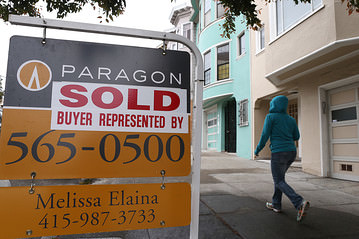A repost of Jennifer McKim’s article in the Boston Globe follows. It shows significant evidence that we are in a real estate recovery even in the broader Massachusetts market. We have been experiencing The Recovery in downtown Boston and on the outer Cape for months now, but this broader evidence is very welcome news as we enter the NewYear.
The pullquote below from the article states what we are hearing all aross the country. Good news especially as we deal with the ramifications of the possible Fiscal Cliff.
“It feels like a housing market that has now switched into the mode of helping drive a recovery,
The Boston Globe/December 28, 2012/Jennifer McKim GLOBE STAff
- Analysts say prices remained stable, while the number of singlefamily units sold rose steeply
- A surge in home sales in November and strengthening property values are adding to a growing sentiment in the real estate industry that 2012 will mark when the housing market in Massachusetts officially began its recovery.
SOURCE: The Warren Group
JAMES ABUNDIS/GLOBE STAFF With the supply of available properties still thin, homes are selling quickly and prices are edging up, prompting real estate specialists to predict that the days of bargain prices for residences are likely to be over soon.
“This year marks the shift in housing,” said John Ranco of Hammond Residential Real Estate in South Boston. “Over the next couple of years we will start to see prices heat up a little bit.”
Last month, 4,539 single-family properties traded owners — the best November for sales since the market peak in 2005, the Warren Group, a Boston company that tracks local real estate, reported Thursday.
The number of single-family home sales through the first 11 months of 2012 exceeded that of all of last year, and the year will probably be the strongest since 2006.
Through the first 11 months of the year, home prices were about where they were for 2011 — at a median price of $288,000 — a trend that industry officials said represents a stabilized market.
In the more active market in Greater Boston, median prices were 1.1 percent above where they were in 2011, at $456,500 for single-family properties, according to the Greater Boston Association of Realtors. It’s been seven years since the housing market in Massachusetts first showed signs of slowing, and during the steepest period of the downturn values plunged 20 percent, the S&P/Case-Shiller Home Price Indices show. Prices have since rebounded modestly, though values have also bounced during the past three years.
But now, prices appear to be on the upswing — with Boston area home values up 1.6 percent in October, compared with the same month in 2011, according to Case-Shiller, which measures repeat sales and is largely considered the best marker of the housing industry.
“It is clear that the housing recovery is gaining strength,’’ said David M. Blitzer, chairman of the index committee at S&P Dow Jones Indices.
This good news comes despite uncertainty over the socalled fiscal cliff and possible changes in the mortgage interest deduction, which provides thousands of dollars in annual savings to many mortgage holders.
There are still many unknowns that could turn the market around.
However, Eric Belsky, managing director of Harvard University’s Joint Center for Housing Studies, said he foresees a strong spring season, propelled by tight inventory and low mortgage rates. He also expects markets outside of Boston to strengthen.
“It feels like a housing market that has now switched into the mode of helping drive a recovery,” Belsky said.
Meanwhile, the condo market appears to be even stronger. The number of condos sold in November, 1,635, was 33 percent above the number a year earlier, according to the Warren Group. Year-to-date condo sales rose 27 percent, compared with a year earlier.
Prices are up, too. The median condo sales price was $275,000 in November, more than 7 percent higher than a year earlier.
Warren Group chief executive Timothy M. Warren Jr. said the condo market is thriving because young people and baby boomers are increasingly interested in living in the city, with all its amenities. “Urban living is gaining ground,” he said.
Both condos and single-family homes are selling faster this year, too. And so the supply of available properties is tightening: The number of single-family homes on the market last month was 25.9 percent fewer than in November 2011, with similar declines in the condo market.
Mary O’ Donaghue, president of the the Northeast Association of Realtors, said she expects that improving consumer confidence, low interest rates, and tight inventory will keep housing moving in the spring.
“We are entering a spring market with close to ideal conditions,” she said.









